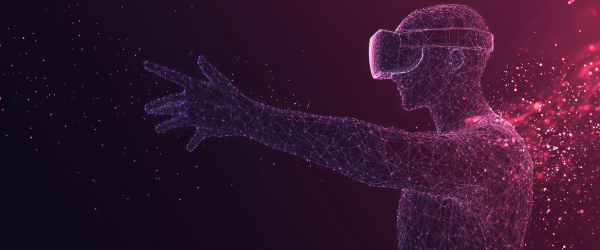What is the Metaverse and Why Should You Care?

The Metaverse is one of the most talked-about technologies today, but what exactly is it? Is it just a buzzword, or is it the future of how we interact, work, and play online? Let’s break down what the Metaverse is, how it works, and why it’s important for you.
1. What is the Metaverse?
The Metaverse is a virtual world where people can interact, work, shop, and socialize using digital avatars. It combines virtual reality (VR), augmented reality (AR), blockchain, and AI to create an immersive digital experience.
Key Features of the Metaverse:
- 3D Virtual Spaces: Users can explore digital environments like cities, offices, or social hubs.
- Digital Avatars: People can customize their avatars for work, play, and social interactions.
- Blockchain Integration: Enables secure transactions using cryptocurrencies and NFTs.
- AI & Automation: Virtual assistants and AI-driven characters enhance interactions.
- Interconnectivity: Seamless experiences across multiple virtual platforms.
Example: Imagine attending a concert, buying digital clothes, and meeting friends—all from a VR headset!
2. How Does the Metaverse Work?
The Metaverse is built on several key technologies that make immersive experiences possible.
Core Technologies of the Metaverse:
- Virtual Reality (VR): Creates fully immersive 3D worlds.
- Augmented Reality (AR): Merges digital objects with real-world environments.
- Artificial Intelligence (AI): Powers virtual assistants, chatbots, and NPCs.
- Blockchain & NFTs: Enables secure ownership of digital assets.
- 5G & Cloud Computing: Provides seamless, real-time interactions.
Example: Facebook (Meta) is developing the Horizon Worlds Metaverse, where users can interact in shared virtual spaces.
3. The Different Ways People Use the Metaverse
The Metaverse is more than just a gaming platform—it’s a new digital economy.
1. Socializing & Virtual Hangouts
- Attend virtual meetups, concerts, and parties with friends.
- Use customizable avatars for unique digital identities.
2. Gaming & Entertainment
- Play Metaverse-based games like Fortnite, Roblox, and Decentraland.
- Attend live sports events and concerts in virtual stadiums.
3. Work & Business in the Metaverse
- Hold virtual meetings and conferences using AR and VR.
- Create and sell digital goods, NFTs, and services.
4. Education & Learning
- Virtual classrooms make remote learning more interactive.
- Medical students practice surgery in simulated environments.
Example: Microsoft’s Mesh for Teams allows employees to collaborate in a virtual office.
4. Why Should You Care About the Metaverse?
The Metaverse isn’t just for gamers—it’s a revolutionary shift in digital interaction.
1. Economic Opportunities
- The Metaverse will create new jobs and businesses, from digital real estate to NFT marketplaces.
- Major brands like Nike, Gucci, and Coca-Cola are investing in virtual products.
2. New Ways to Work & Learn
- Remote work will become more immersive and interactive.
- Universities and training centers will offer VR-based education.
3. Enhanced Digital Social Life
- Instead of texting, people will meet as avatars in virtual spaces.
- AI-powered characters can assist and interact in digital environments.
Example: Companies like Meta, Google, and Apple are investing billions in Metaverse technology.
5. The Challenges & Risks of the Metaverse
Like any emerging technology, the Metaverse comes with challenges.
1. Privacy & Security Risks
- Concerns over data privacy and user tracking.
- Risks of identity theft in digital environments.
2. Digital Addiction
- Excessive use of virtual spaces could lead to mental health concerns.
3. Expensive Technology
- VR headsets and high-speed internet are still costly for many users.
Example: Experts are pushing for Metaverse safety policies to protect users.
6. The Future of the Metaverse
The Metaverse is still evolving, but it’s expected to become a trillion-dollar industry by 2030.
What’s Next?
- Full-body VR suits for deeper immersion.
- AI-powered Metaverse assistants for personalized experiences.
- Decentralized ownership where users control their own digital assets.
Example: Elon Musk’s Neuralink aims to connect human brains to the Metaverse!
Conclusion
The Metaverse is set to transform how we work, socialize, and experience digital content. While challenges exist, its potential to revolutionize industries and create new digital economies makes it one of the biggest tech trends of the future.












